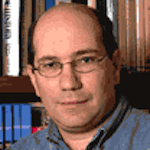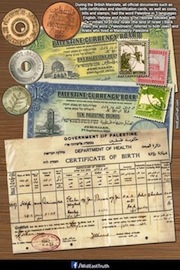| |
Book Review of Daniel Mendelsohn, The Lost: In Search of Six of the Six Million
Resurrection
A writer spans the globe to revive the memory of relatives murdered in the Holocaust
By Gil Troy
The News & Observer
September 17, 2006
Most families have a self-appointed family historian. This is the kid who soaks in the grandparents' stories, masters the family tree and can distinguish between a second cousin and a first cousin once removed. For the millions of Americans whose grandparents' foreign accents evoke exotic origins, recording the family stories resurrects lost worlds.
The nostalgic tales often make the homelands far more appealing than they were. But for Holocaust survivors' children, grandchildren and great-grandchildren, the compulsion to record, remember, re-create the tales of this most abused and now dwindling-away generation takes on particular urgency, even though the memories they preserve are scarred by the Nazis' unprecedented monstrosity.
Daniel Mendelsohn's obsession with his roots began with what my brothers and I used to call a "gene alert." This all-American Long Island kid growing up in the 1970s looked remarkably like his great-uncle Shmiel, a Ukrainian Jewish butcher the Nazis murdered in the 1940s. The resemblance was so great that whenever young Daniel entered a roomful of his eccentric Yiddish-speaking, survivor relatives, they often burst into tears. "Oh, he looks so much like Shmiel," they would sigh, triggering rounds of wailing and hand-wringing.
Alas, Uncle Shmiel's life, along with his family's lives, had been reduced to a few photographs, scattered letters and the conversation-stopper, whispered hoarsely, rapidly: "Uncle Shmiel and his wife, they had four beautiful daughters ... They raped them and they killed them all."
With passionate intelligence, Mendelsohn, a literary critic and author of two previous books, describes his efforts to learn about his uncle's family in "The Lost: A Search for Six of Six Million." His investigation is driven by a further mystery surrounding his beloved, larger-than-life grandfather, Abraham, who was Shmiel's brother. When Aby died in Miami Beach in 1980, the family discovered Shmiel's desperate letters begging for help as the Nazi noose tightened in the late 1930s.
A meticulous chronicler who speculates grandly, imaginatively but responsibly when he cannot state authoritatively, Mendelsohn wonders if Abraham's secret stash reflects some great betrayal or brotherly love. The question -- and Shmiel's death -- takes on particular poignancy because Shmiel had returned to the old country after spending time in New York. Family lore always attributed this unknowingly fatal decision to the fact that Shmiel was a somebody in his hometown, where his family had lived for centuries, "even before there was a Bolechow," and a nobody in the New World.
Mendelsohn, who holds Ph.D. in Classics from Princeton, embarks on a Homeric Odyssey, infusing his story with the requisite drama. His aim in researching these six dead relatives, he writes, "had been to try to learn whatever scraps of details about them might still be knowable, what they looked like, what their personalities were like, and yes, how they died, if anyone could still tell me that."
His quest takes him back to Bolechow, then across the globe as he interviews 12 survivors in Australia, Europe and Israel. Some siblings occasionally joined his trips, most notably his brother Matt, a photographer, and Mendelsohn weaves in his own family's complexities to enliven his tale.
Inevitably, as with any Holocaust memoir, the story gets harrowing. Mendelsohn's admirable desire to understand how his relatives lived, not just how they died, combined with his obsessive research and fertile imagination, give the book a you-are-there quality. Even as he cautions that it is impossible, even disrespectful, to "imagine" or "describe" the Nazi horror "for which there is no parallel in our lives," he wonders what sights, sounds and smells Shmiel's 16-year-old daughter Ruchele experienced when the Nazis' first "aktion" swept her up with 1,000 other Jews. What would it "have been like," Mendelsohn asks, "as a sixteen-year-old, perhaps overly sheltered girl of a certain era," to be piled into a human pyramid, and watch "as the rabbi you have known since you were a young child has his eyes cut out, has a cross cut into his chest, and is then forced to dance naked with another terrified young woman."
Such carefully documented testimony proves just how deliberately, systematically, profanely cruel the German killers were, aided, alas, by many eager Ukrainians. Such sadism also highlights the Nazi mass murder's unique, unprecedented scale, mocking the many comparisons bandied about to score cheap political points today.
While sobering, "The Lost" is not depressing. Many parts are lyrical, as Mendelsohn charmingly re-creates the lost world of Bolechow, at the Carpathian mountains' footsteps, and its survivors' persisting European flair. Mendelsohn ably teases out details from the elderly survivors, who still love the town whose natives ultimately betrayed them. Moreover, Mendelsohn gets the closure he seeks, as he discovers the dramatic and surprising details regarding Shmiel's demise.
By inserting riffs of Biblical commentary and contemplating his own family dynamics, Mendelsohn suggests some great theological or psychological insight is forthcoming. But the book teaches more about history and memory than family or piety. The more Mendelsohn dug, he confesses, "The more I was aware of how much simply can't be known." Part of this had to do with "how certain human memories will be fallible, while others seem as reliable as machines." And even the most detailed memories are idiosyncratic cartoons, not 24/7 documentaries. This book is humbling to historians. No master of the past, no matter how talented, can truly re-create it or comprehend it.
Mendelsohn's sad, wise, compelling book ultimately serves a dual purpose. While highlighting yesterday's elusiveness and evanescence, "The Lost" gives shape to the eternal memories of Shmiel, Esther, Lorka, Frydka, Ruchele and Bronia J…ger, providing a poignant, powerful and ultimately lasting tribute to the lives of six of the six million. In one interview, with Adam Kulberg, now of Copenhagen, Mendelsohn asked a provocative question: What was the "one thing" about Bolechow "that should be remembered?" Kulberg gave an equally provocative answer: "There were the Egyptians with their pyramids. There were the Incas of Peru. And there were the Jews of Bolechow."
Daniel Mendelsohn can proudly proclaim "mission accomplished." He has done his family and the late Jews of Bolechow a great service simply by reminding the world that they were there. He has provided the best possible response to the Nazi nightmare -- sensitive testimony evoking who was lost even as it frustrates by its incompleteness. In capturing that paradox, Mendelsohn teases out one more dimension of the tragedy, and one more dimension of the survivors' superhuman resistance. We remember as best we can, while mourning the unsatisfying gap between memory and reality. In remembering, however imperfectly, the lost Jews of Bolechow, Mendelsohn honored them and the millions of Jews who lived in thousands of communities across Europe for centuries, only to be consumed by the evil of Nazism and their neighbors' anti-Semitism.
(Gil Troy teaches history at McGill University.)
Comment on this article using the "Post Reply" button

|
|











